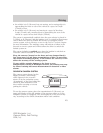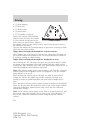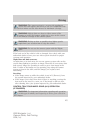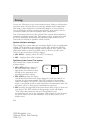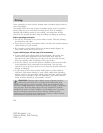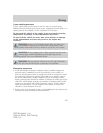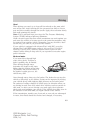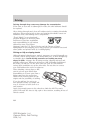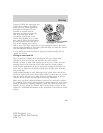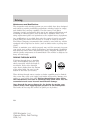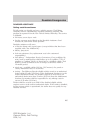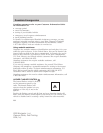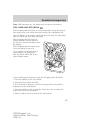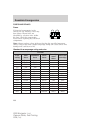
Sand
When driving over sand, try to keep all four wheels on the most solid
area of the trail. Avoid reducing the tire pressures but shift to a lower
gear and drive steadily through the terrain. Apply the accelerator slowly
and avoid spinning the wheels.
Note: If air is released from your tires, the Tire Pressure Monitoring
System (TPMS) indicator light may illuminate.
Avoid excessive speed because vehicle momentum can work against you
and cause the vehicle to become stuck to the point that assistance may
be required from another vehicle. Remember, you may be able to back
out the way you came if you proceed with caution.
If your vehicle is equipped with AdvanceTrac with RSC, press the
AdvanceTrac with RSC button (refer to AdvanceTrac with Roll
Stability Control (RSC) Stability Enhancement System in this
chapter) while driving in deep sand if you experience excessive engine
power reduction.
Mud and water
If you must drive through high
water, drive slowly. Traction or
brake capability may be limited.
When driving through water,
determine the depth; avoid water
higher than the bottom of the hubs
(if possible) and proceed slowly. If
the ignition system gets wet, the
vehicle may stall.
Once through water, always try the brakes. Wet brakes do not stop the
vehicle as effectively as dry brakes. Drying can be improved by moving
your vehicle slowly while applying light pressure on the brake pedal.
Be cautious of sudden changes in vehicle speed or direction when you
are driving in mud. Even four–wheel drive vehicles can lose traction in
slick mud. As when you are driving over sand, apply the accelerator
slowly and avoid spinning your wheels. If the vehicle does slide, steer in
the direction of the slide until you regain control of the vehicle.
If the transmission, transfer case, front axle or rear axle are submerged
in water, their fluids should be checked and changed, if necessary.
2009 Navigator (nav)
Owners Guide, 2nd Printing
USA (fus)
Driving
281



